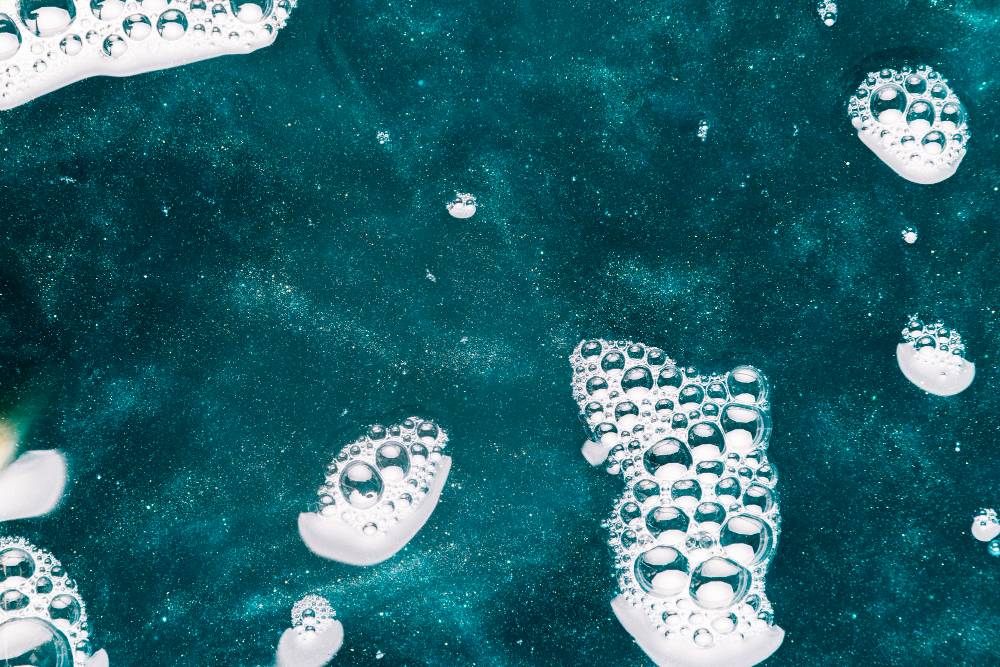
Ponds are beautiful and can be a great addition to your yard or neighborhood. However, one issue many pond owners notice occasionally is foam appearing on the water's surface. You might be wondering, “Why is my pond foamy?” Foam can be a sign that something isn't quite right with your pond, and it's essential to understand the causes and how to deal with it. Aquatic Restoration explains the reasons behind foamy ponds and what pond maintenance steps can help.
Sometimes, the foam on your pond is entirely natural. Wind and water movement can cause bubbles to form on the surface. If these bubbles don’t break quickly and stay around, you get foam. As a result, bubbles don't pop as fast as they would in cleaner water.
This type of foam isn’t usually a big problem. However, it might be more common in certain seasons, especially in spring or fall, when there’s more plant growth or decaying leaves. In cases like this, regular pond maintenance can help reduce the buildup of organic materials, so there's less chance for foam to form.
Another common cause of pond foam is decaying organic matter. If your pond has a lot of leaves, dead plants, or even dead fish, these will break down over time. This process releases natural proteins into the water, which can lead to foam forming on the surface.
To reduce foam, it’s important to regularly remove dead plants and leaves from your pond. If you allow these materials to pile up, they can release a lot of nutrients into the water, encouraging algae growth and other issues, such as foam.

If you have fish in your pond, one mistake you might be making is overfeeding them. When fish are overfed, the uneaten food sinks to the bottom of the pond and begins to decompose. Like decaying plants, this decomposing fish food releases proteins and other materials into the water, leading to foam. Not only does overfeeding create foam, but it can also lower the water quality for your fish, making them unhealthy.
To prevent this, feed your fish only what they can eat in a few minutes. If you see food sinking to the bottom, you know it's time to cut back on the amount you’re giving them. Proper pond maintenance, including monitoring the food you provide, will help keep your water clear and foam-free.
Another potential cause of foam in ponds is an imbalance in the water chemistry. Ponds must have the proper pH, oxygen, and chemical balance to stay healthy. Foam can appear if your pond has too many or too few certain nutrients or elements. Chemical imbalances are often caused by runoff from fertilizers, pesticides, or other chemicals that get into the pond from surrounding lawns or gardens.
Testing your pond water regularly as part of your retention pond maintenance routine can help you catch these imbalances before they become a bigger problem. If you notice foam and other issues like cloudy water, strange smells, or dying plants and fish, it’s likely a sign that your pond water chemistry is off and needs to be adjusted.
If your pond is located near roads, agricultural land, or other areas where pollutants could enter the water, this can also cause foam. Chemicals like oil, gasoline, or pesticides can enter your pond and cause a chemical reaction that produces foamy water.
To prevent this, ensure you’re taking steps to protect your pond from runoff. Installing barriers like plants or small berms around the pond's edge can help filter out pollutants before they enter the water. Regular pond maintenance can also help by keeping your pond healthy, making it better able to handle any small amounts of pollution that might find its way in.
Lastly, an overcrowded pond can also lead to foam. If you have too many fish or too much wildlife, there can be excess waste in the water. Like decaying plants or food, this waste releases proteins and other organic materials into the water, causing foam. If you’re noticing a lot of foam and have a large population of fish or other animals, it might be time to thin out the population.
Maintaining a balance between the number of animals in your pond and its size is crucial for good pond maintenance. Regularly check the condition of your pond and adjust your wildlife population as needed to keep things in balance.
Now that you know why your pond might be foamy, let’s discuss how to prevent it. Regular retention pond maintenance is critical. Here are some tips:
Following these pond maintenance steps, you can keep your water clear and foam-free. Remember, a little bit of foam isn’t always a sign of a severe problem, but if it’s persistent or accompanied by other issues, it’s worth taking a closer look at what’s happening in your pond.
Stormwater ponds form a part of modern stormwater management systems. As the name suggests, they collect and manage runoff from…
Sediment buildup is one of the biggest threats to lakes and ponds. It not only impacts water quality but also…
If you own a pond or lake, you know that proactive maintenance is an integral part of keeping the…
If you’ve ever walked outside and noticed your lake suddenly turn a murky shade of green, you’re not alone. Many…
Lakes are vital ecosystems that support wildlife, protect water quality, and enhance the quality of life for surrounding communities. Whether…